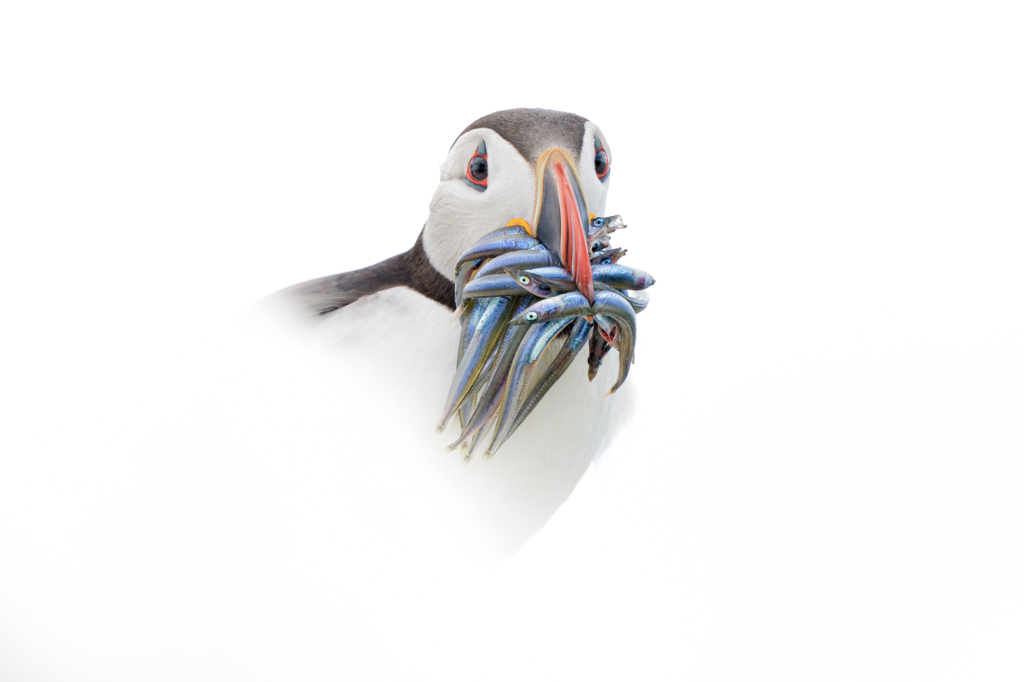I traveled to the Farne Islands in the UK to photograph Atlantic puffins. During their breeding season, from May through July, the islands can host up to 100,000 birds.
These puffins are ground-nesting seabirds that dig burrows up to three feet deep. These tunnels protect their eggs and chicks from harsh weather and predatory gulls.
Puffins possess remarkable adaptations that allow them to catch and hold multiple fish at once. Their beaks are equipped with backward-facing spines on both the roof of the mouth and tongue, and their jaws are uniquely structured—able to open almost parallel—making it possible to stack several fish neatly inside. While it’s common to see a puffin return with 8–12 fish in its beak, researchers have documented individuals carrying more than 60 sand eels at once.
The puffin in my image had just returned from feeding at sea and landed on a white stone wall that surrounds the island’s lighthouse. This wall seemed to act as a staging area, giving puffins a vantage point to assess the gulls hovering nearby. Gulls were relentless in their efforts to steal a meal, harassing puffins constantly as they attempted to return to their burrows.
Since puffins frequently landed on this wall, I positioned myself low and close to it. By including part of the white stone in the foreground, I created a soft, blurred haze in front of the puffin, while a bright cloud-filled sky in the background completed a natural high-key effect—helping the bird and its catch stand out in a clean, minimalist portrait.


